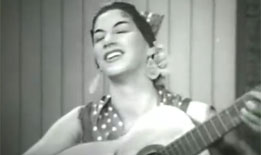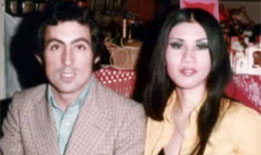?I am another,? wrote Rimbaud. This declaration could be taken as the founding paradox of the modern aesthetic, back in the 19th century, when the flamenco genre as such sprung from the industrial revolution and late Romanticism.
Travel. What better way to practice this ?being another? than to go on a journey, to speak another language, behave according to different customs, feel amazed, excited, leave one?s place and oneself behind.
Foreigners have always been an integral part of flamenco, from Romantic travellers to the ?guiris? or tourists who now fill Spain?s flamenco tablaos and shows of all kinds. Mi gustar flamenco very good is a book by José Luis Ortiz Nuevo that sheds light on their role: many of the earliest articles on flamenco were written by foreign writers, for example. We would know very little without them. What would flamenco be without that ?outsider? perspective?
As Pedro G. Romero says, there is a fundamental tension between the outside vision and internal codes ? the constant dialectic between exteriority, surface, movement and events on one hand, and the relationship with the past, patterns, and rigid text on the other. Both are dynamic constructions that mutually shape each other through performative interactions.
This list is dedicated to my favourite guiri, my Asturian-Australian friend N., a translator with flamenco blood, and to all of you.
THE WOMAN AND THE PUPPET
This mini-selection of illustrious foreigners gets off to a saucy start with the audacity and charm of Brigitte Bardot dancing at the Feria de Sevilla in a fragment from Julien Duvivier?s 1959 film Le femme et le pantin.
MOREEN SILVER ?LA MARRURRA? AND TOM SORENSEN ?TOMÁS DE UTRERA?
Myth or reality? For the moment we have the reality of the myth, which has been so important in the construction of the history of flamenco.
These two individuals turned up in Madrid in the 1960s, in circles linked to the Centro Cultural de Estados Unidos, the supposed CIA operating base in Spain. Their possible status as spies ? experts in deception and ?becoming another? ? may have smoothed the way for them to do the same in the field of flamenco.
Moreen Silver, aka Maria ?La Marrurra?, went as far as to release a flamenco record in 1971 with the support of Antonio Mairena and the magnificent guitar of Melchor de Marchena, who accompanies her in this video. Tomas Sorensen, or ?Tomás de Utrera?, who we can see behind her, was a guitarist who accompanied Rafael Romero ?El Gallina?, among others.
EL POLLITO DE CALIFORNIA
Johnny Lane went to Madrid to study Spanish Literature and ended up catching the flamenco bug in Sacromonte, Granada. He was nicknamed ?el pollito? (the chick) because the only thing he sang at first was a bulerías lyric featuring a cheeping chick: ?El pollito que piaba, el pollito que pió.?
We could say that Johnny turned his foreigner status into a highly personal style. Here he recounts one of his anecdotes with Camarón de la Isla.
PAYO HUMBERTO
Payo Humberto began taking guitar classes in Cádiz in 1963 and soon moved to Madrid, where he deepened his interest and played with figures such as Enrique Morente. He was a student and follower of Niño Ricardo, like his fellow Dutchman Constant Nieuwenhuys ? an artist who created the utopian architecture project ?New Babylon?, inspired by the way of life of the Roma people. Now Payo Humberto is a YouTube guru for anybody who is learning to play flamenco guitar.
SARITA HEREDIA
We know that a foreigner is a person who comes from somewhere else, but most flamencos have had to become foreigners in foreign lands all over the big wide world in order to earn a living.
So here is the wonderful Sarita Heredia, who moved to New York in the 1950s, transmitting that fabulous flamenco-circus spirit that was highly popular at the time, and playfully dealing with Groucho Marx?s clowning around.
CURRO LUCENA
And to finish up, rather than the typical clip of a Japanese flamenco singer (though there are some very good ones) here is an oddity that the encyclopaedic singer Curro Lucena brought back from his travels through Japan in the 1970s. His son Frankie Moon lets on that it is a Japanese version of a song by British singer Matt Moro, who had, in turn, released a record called En español in the 1990s, in which he sang in Spanish with that ?guiri? accent that we celebrate here.
Because that?s what it?s about: dialects, versions, translations, betrayals.






